Henry Moore, Barbara Hepworth and many more : celebrating 100 years of art in Wakefield
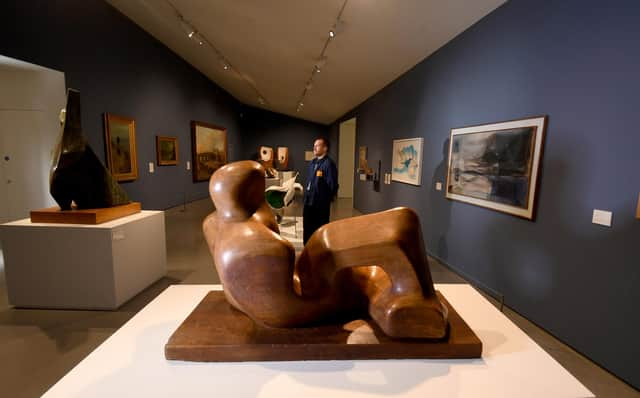

The collection, now in the care of The Hepworth Wakefield, includes pieces by Barbara Hepworth and Henry Moore in their earliest years.
Now new acquisitions are also to go on display marking a century since its start. Three new exhibitions have opened, celebrating the breadth of the gallery's living collection, Yorkshire's inspiring landscapes and the district's progressive approach to ceramics.
Advertisement
Hide AdAdvertisement
Hide AdIt is all made possible with philanthropy and gifts, and by the communities at its heart.
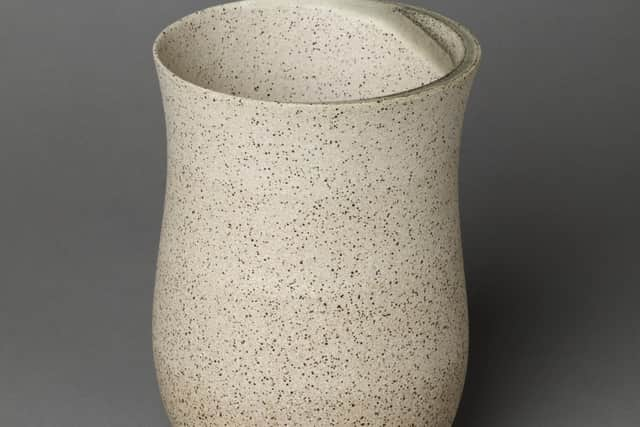

Senior curator Eleanor Clayton said: "A large part of the founding of the collection was the thought that it should be shared with everybody. It shouldn't just be accessible to the people who could afford to acquire it.
"When it was first founded, there were quite Victorian values I suppose, with this idea of art as a tool for improvement of the masses," she added. "Where Wakefield was ahead of its time was in collecting contemporary art. It wasn't just landscapes – it was artists like Henry Moore and Barbara Hepworth, very early in their careers. And also with works that were very much against what was considered sculpture for the time.
It was quite radical for the time, she added: "We can see that now, we own these works, which we'd never be able to buy."
Advertisement
Hide AdAdvertisement
Hide AdWhen The Hepworth took on Wakefield's collection in 2011, it was with a founding aim to support living artists and fill historical gaps. It took on responsibility for caring, researching, publicly sharing and strategically building the collection in line with this founding aim.
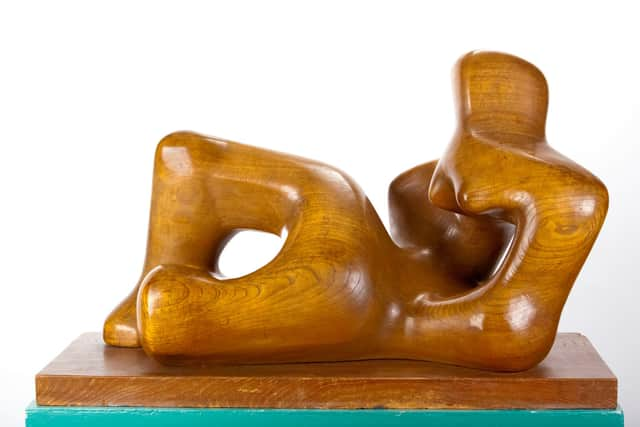

The new exhibitions centre around three themes.
Living Collection presents new works that have recently been added to the collection in dialogue with historic works in the collection, including by Henry Moore and Barbara Hepworth which were acquired by Wakefield in the 1920s and ‘30s as these Wakefield-born artists were establishing their careers.
Artworks on display in A Living Collection for the first time since their acquisition include: a large-scale fresco painting, Republic 2020 by Rosie Hastings and Hannah Quinlan, gifted by Russell Tovey through the Contemporary Art Society.
The painting was provoked by a question of what a woman-dominated society would look like. Rejecting a utopian idea of a non-violent and inherently caring society, the duo depict women in conflict in a public space, highlighting issues of racism, homophobia and transphobia.
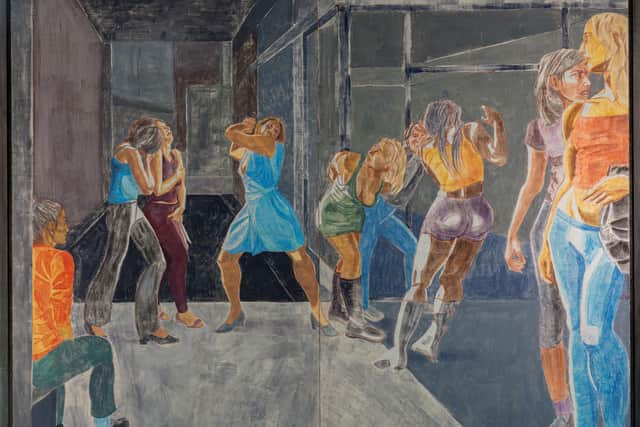

Advertisement
Hide AdAdvertisement
Hide AdAn oil painting, Elliot, 2020 by Yorkshire-born artist Sarah Ball was acquired for The Hepworth Wakefield in 2022 through a generous donation from Greg and Alyssa Shannon and with thanks to Stephen Friedman Gallery. The portrait exemplifies her signature soft brushstrokes and muted colour palette that contrast with the piercing gaze of her subject – often people found from newspaper cuttings, archive photographs or social media. Ball’s paintings are both intimate and confrontational, addressing issues of identity, gender and accepted aesthetics.
Jimmy Robert’s Frammenti VII, 2020, gifted by Thomas Dane Gallery, is one of a series of eight Frammenti works by the artist, that bring together collage, photography and sculpture to reflect on the Black body and its representation in classical sculpture.
Then the second strand, Magic in this Country: Hepworth, Moore and the Land.
It takes Hepworth and Moore’s formative artistic influence of the landscape as its starting point. Moore spoke of early encounters with rocky outcrops, the ‘big, bleak lump of stone set in the landscape’, while Hepworth recalled, ‘moving through and over the West Riding landscape with my father in his car, the hills were sculptures; the roads defined the forms’. This exhibition explores the specific landscapes that continued to inspire them throughout their lives, alongside works by contemporary and historic artist in the collection that were inspired by those same landscapes.
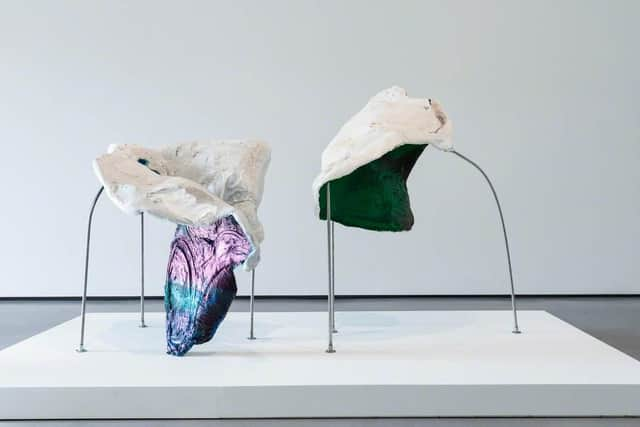

Advertisement
Hide AdAdvertisement
Hide AdThe exhibition examines these landscapes alongside works similarly inspired, such as Philip Reinagle’s 1793 view of Wakefield Bridge and John Atkinson Grimshaw’s Baiting the Lines, Whitby in 1884. Then more modern works, since 2020, with Emii Alrai and Ro Robertson.
"Even when the collection was founded 100 years ago, paintings showed what Wakefield was like hundreds of years before that,” says Eleanor.
"This idea, partly, is that historical work can make us consider the past, where we come from and where might it change in the future. It's also art as it relates to modern life. It's not just for art to be shared for its beautiful landscapes. But also that it can tell us about our formed experiences and our hopes for the future as well. It's bringing all of that to the public, to link our experience of life through art."
Finally, The Art of the Potter: Ceramics and Sculpture from 1930 to Now, with a celebration of Wakefield's progressive approach to collecting ceramics.
Advertisement
Hide AdAdvertisement
Hide AdIt celebrates Wakefield’s progressive approach to collecting ceramics, highlighting artists who explore the sculptural possibilities of this versatile medium since the 1930s,including an important multi-piece work by Gwyn Hanssen Pigott, 2012, a large moon jar by Akiko Hirari from 2020 and Asymmetric Vessel made by Magdalene Odundo in 2022 which will be displayed at the gallery for the first time following its debut at the 2022 Venice Art Biennale. Other artists included are Alison Britton, Hans Coper, Elizabeth Fritsch, Ewen Henderson, Ryoii Koie, Bernard and Janet Leach, Jennifer Lee and Lucie Rie.
Over 100 years, the three exhibitions explore different facets in the collection. Later in the year, more exhibitions and series are to be announced.
To Eleanor, there is a "huge amount" for Yorkshire to be proud of in the displays, not just in the inspiring landscapes but in the artists they are produced by.
"What's amazing is just the incredible quality of the artwork, from the historical collection through to what is new now," she said. "It's amazing the collecting has continued through so many difficult times, right through the Second World War while many are through Covid. And all through the philanthropy and gifts of people who are excited to share."
Advertisement
Hide AdAdvertisement
Hide AdSimon Wallis, Director of The Hepworth Wakefield said: ‘The Hepworth Wakefield has no budget for acquisitions and relies on donations, gifts and fundraising to continue to build the collection in line with its original ambitions and in order to remain relevant today. These new exhibitions are testament to the hard work of the gallery team in strategically developing the collection and to our many supporters for recognising the importance of Wakefield’s collection and our ability to display and share art works with wide audiences in innovative and engaging ways. I very much hope the collection will continue to develop and inspire audiences for another 100 years.”
hepworthwakefieldf.org